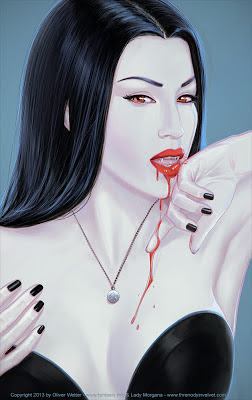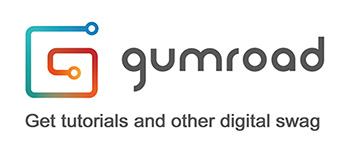 There exists very much confusion about proper usage of references, especially for the digital painting artists out there. Working with references is a delicate subject.
There exists very much confusion about proper usage of references, especially for the digital painting artists out there. Working with references is a delicate subject.
Since the digital age, there is more and more concern over the possibility that one can trace over an actual image or just use a "mixer-brush" or "smudge-tool", to make a photograph look like a painting.
The problem with the before mentioned method is, that it is visible to viewers and peers alike if a photo is overpainted.
As artist, you are better off asking the photographer first, getting the rights to do so and state it in the image description to avoid confusion.
It is actually not forbidden, especially if you use your own photographs, but it can be misleading if it isn´t stated anywhere. In the worst case people would commission you, but are afraid to learn that your methods depend on a specific photograph.
If you are into drawing and illustration, sooner or later you will find that it doesn´t help you to trace, your perception, stylistic handwriting and decisions of "what" makes a painting cannot be archieved by simply painting over a photograph.
There is no general law that could be applied about where an original drawing begins and where a copy is made. However, some rules can be applied at every time if you are unsure whether you can publish a work as "your own", or not:
- You own the rights to a photographic reference
- If you have not the rights, your work is only "based" on a photograph and you give credit where credit is due
- You use many different photographs, one for pose, another for coloring another one for expression...
- When your creation looks or is more a stylized representation of the reference image
- You use no photographs at all
The last point would be probably the best, but except for modern art, it can rarely be applied in practice.
Even if you create creatures out of your head you need "real-life" references, to make your work "believable", because what you depict visually will be seen by humans, not aliens and therefore has to follow some general rules of perception such as gravity, proportions, anatomy, yadda yadda.
If reference is used in an appropriate and responibly way, your work can benefit from practicing this and also you prevent that your work is a slave to the reference.
If reference is used in an appropriate and responibly way, your work can benefit from practicing this and also you prevent that your work is a slave to the reference.
If you are able to work entirely from imagination, congratulation, you have left the real world and perceive life through the Matrix®. The mere mortal of us have to get through a number of visual guidelines and image references to follow, especially in commissioned work. A technical help would be useful at many times.
A Tip For Digital Artists
But as a matter of curiosity on how to improve, I experiment a lot with different tools and settings.There are some tools that I can recommend here, find also some screenshots below.
First off, if you use the Windows or OSX -picture viewers, forget them, get the nomacs - image lounge, a very useful, lightweight - free little tool (provided under the GNU General Public License v3) that can also show your images frameless, with a lot of features - nearly perfect: http://www.nomacs.org/
The only thing nomacs doesn´t have is the option to keep the images to float on top, but there´s deskPins for that, together this is a really great combination.
Above: Another great feature of nomacs is the PSD-decoder, it can show PSD-files, which makes searching a full folder of drawings much easier if you want to get to the "master-file" quickly.
Image credits: Lady Morgana: http://threnodyinvelvet.com | Warren Louw http://www.warrenlouw.com/




















Wonderful blog, digital painting is amazing, but I still like to draw sketches on ordinary artboards.
ReplyDeleteThanks for your comment, you are welcome! Most if not all tips apply to any artist anyways;)
Delete